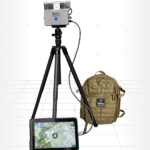In the quest to enhance the whole body imaging technology that is being deployed to the nation's airports the Department of Homeland Security (DHS) is taking two approaches in fostering the development of software that can automatically detect objects concealed on a person's body, a department official says. The Transportation Security Administration is currently working with the suppliers of the Advanced Imaging Technology (AIT) machines to develop the Automatic Target Recognition (ATR) algorithms, James Tuttle, head of the Explosives Division…
Contract Updates
UPDATE: Eagle Safe Surfaces Colorado Inc. (Englewood, Colorado (SPE8EC-26-D-0006) – $139,000,000),
UPDATE: Eagle Safe Surfaces Colorado Inc.,* Englewood, Colorado (SPE8EC-26-D-0006, $139,000,000), has been added as an awardee to the multiple award contract for snow removal equipment, issued against solicitation SPE8EC-21-R-0008 and awarded Jan. 20, 2023. The contracting activity is Defense Logistics…
AvKARE LLC (Pulaski, Tennessee) – $12,915,328
AvKARE LLC, Pulaski, Tennessee, has been awarded an estimated $12,915,328 firm-fixed-price requirements contract for telmisartan tablets. This was a competitive acquisition with nine responses received. This is a one-year base contract with four one-year option periods. Locations of performance are…
Bernard Cap LLC (Hialeah, Florida) – $18,857,146
Bernard Cap LLC,* Hialeah, Florida, has been awarded a maximum $18,857,146 firm-fixed-price, indefinite-delivery/indefinite-quantity contract for green service uniform garrison caps. This was a competitive acquisition with six responses received. This is a five-year contract with no option periods. The ordering…
Science Applications International Corp. (Reston, Virginia) – $26,253,706
Science Applications International Corp., Reston, Virginia, has been awarded a $26,253,706 cost-plus-fixed-fee contract in support of Air Force modeling simulation sustainment support. The Air Force modeling and simulation services support (AFMS3) contract provides comprehensive support to the Department of the…













